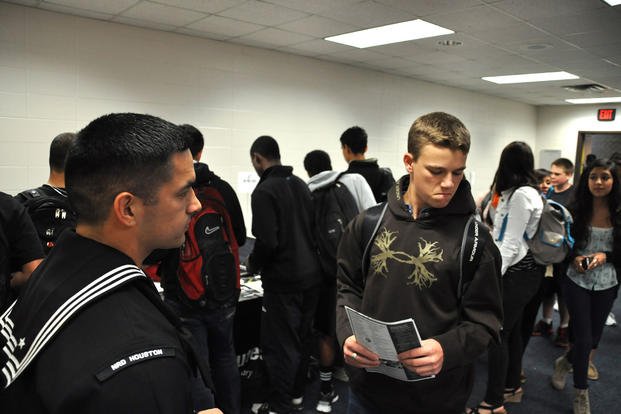A number of myths have been perpetuated about young Americans who volunteer for active-duty military service. The information herein is intended to dispel such myths.
Myth: Military recruits are less educated and of lower aptitude than American youth.
Fact: The opposite is true. More than 90% of military recruits have a high school diploma -- a credential held by only about 75% of their peers. A traditional high school diploma is the best single predictor of "stick-to-it-iveness" and successful adjustment to the military. Recruits with a high school diploma have a 70% probability of completing a three-year term of enlistment, compared with a 50% likelihood for non-graduates.
Nearly two-thirds of today's recruits are drawn from the top half of America in math and verbal aptitudes -- a strong determinant of training success and job performance.
Myth: The military attracts disproportionately from poor or underprivileged youth.
Fact: Military recruits mirror the U.S. population and are solidly middle class.
A recent report shows that more recruits come from middle-income families, with far fewer drawn from poorer families. Youth from upper-income families are represented at almost exactly their fair share.
Myth: A disproportionate number of military recruits come from urban areas.
Fact: Urban areas are the most underrepresented. Data show that urban areas usually are underrepresented among new recruits. Suburban and rural areas are overrepresented.
Myth: The military is not geographically representative of America.
Fact: Military recruits are closely proportionate to the general population.
The southern region of the U.S. generates the most recruits but also has the greatest density of youth population. The South produces 41% of all recruits (compared to 36% of the 18- to 24-year-old population). The Northeast generates 14% of new recruits (18% of the 18-24 population). The West and North Central regions produce 21% and 24% of new recruits (accounting for 24% and 23%, respectively, of the 18-24 population).
Myth: The military takes no better than an average cut of American youth when it comes to medical or physical conditioning.
Fact: About half of today's youth are not medically or physically qualified against current, and necessary, enlistment standards.
Everyone joining the military is screened rigorously for a variety of medical and physical factors that bear on successful military performance -- often under austere conditions. A number of common maladies among today's youth (asthma, orthopedic injuries and obesity) are disqualifying. The Defense Department sustains these standards to ensure that U.S. forces can meet the demands placed upon them by worldwide deployments in physically challenging circumstances. Nearly half of American youth tend to be disqualified for health-related reasons, with obesity as the leading cause.
Myth: The military is a good alternative for youthful offenders.
Fact: Current enlistment standards bar many youthful offenders from enlisting.
Today's military requires individuals with strong moral character. One underlying purpose of moral character screening is to minimize entrance of those who are likely to become disciplinary problems or security risks. Moreover, the services have a responsibility to parents who expect their sons and daughters will not be placed into close association with people who have committed serious offenses or whose records show ingrained patterns of misbehavior.
Myth: Incentives and bonuses are not very effective in stimulating recruiting.
Fact: Bonuses and incentives are instrumental to the services' recruiting efforts.
Studies consistently show that bonuses and education incentives are cost-effective in offsetting challenges posed by a strong economy or changing enlistment propensity. The most efficient incentive packages -- constantly redesigned -- are used by all services to recruit the right people at the right time, with the right skills and at the lowest cost.
Incentives are used to expand the market, to channel enlistments into critical skills; to encourage specific "terms of enlistment" ranging from 2-6 years; to motivate sooner enlistment when needed to fill training vacancies; and to reward higher education. The bottom line is that incentives, when applied efficiently, are often the difference between failure and success in recruiting America's all-volunteer force.
Interested in Joining the Military?
We can put you in touch with recruiters from the different military branches. Learn about the benefits of serving your country, paying for school, military career paths, and more: sign up now and hear from a recruiter near you.














